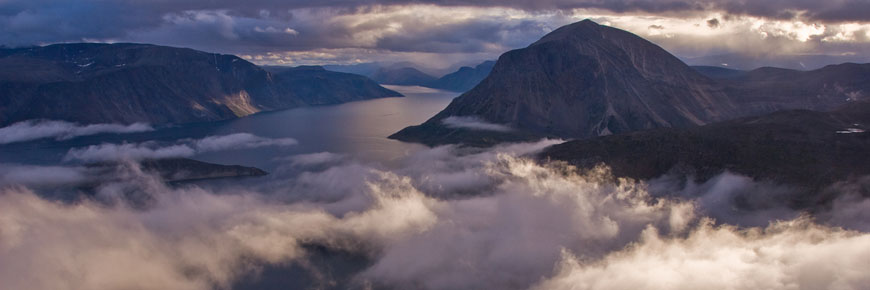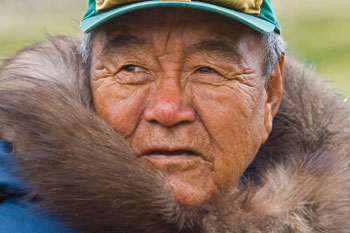
Torngat Mountains National Park
Two paths, one destination
In Torngat Mountains National Park, Indigenous knowledge works hand in hand with western science to protect a park and a homeland.
A place of mountains, ice and streaming wildflowers, Torngat Mountains National Park covers a 9,700 square-kilometre wedge of land at the northern tip of Labrador. Its name comes from the Inuit word Torngait, meaning “place where the spirits dwell.”
Over centuries, Inuit have built up vast body of knowledge about the land, weather and wildlife. Today, that first-hand knowledge teams up with modern science to guide management of the park… and help maintain a way of life.
Science and Indigenous knowledge may follow two different paths across this landscape, says Darroch Whitaker, but they converge at trail-end.
“I’ve seen the synergies between the two, Inuit value science, but they also have their own knowledge to share. I’ve seen how these two ways of knowing inform one another, and how drawing on Indigenous knowledge makes the science stronger.”

A park, a homeland, a way of life
Torngat Mountains National Park has an all-Inuit Cooperative Management Board which advises Parks Canada on the running of the park. In addition, all park staff are Inuit.
“The way we do research, and the kind of research we solicit, is tied to Inuit values and needs,” says Dr. Whitaker.
Food sources such as caribou top the list of resources that are important to Inuit. The park is home to the Torngat Mountains herd, which has helped sustain Inuit for generations.
However, little information was available about the Torngat Mountains herd, although limited scientific data indicate that it is quite small. To broaden the body of knowledge about the herd, the park collaborated with Nunatsiavut Government (a self-governing Inuit regional government) to commission an Indigenous knowledge study.
The study consisted of interviews with 33 traditional knowledge-holders. These interview subjects were Inuit hunters and elders who represented over seven decades of expertise. Study participants identified a wide range of threats to the caribou, including greater hunting pressure, habitat degradation and growing populations of predators due to climate change.
Another study is underway on a seal population in the park’s Kangalaksiorvik Lake. A major research question is whether the seals winter in freshwater or whether they swim downstream to the ocean. The Cooperative Management Board has asked the park to delay scientific research until an Indigenous knowledge study can be completed.
“Inuit may already have the answers to key questions,” says Dr. Whitaker. “For example, they may have harvested seals in the lake during winter and so could tell us if some remain there all year.”
Parks Canada works closely with local Inuit and the governments of Nunavik and Nunatsiavut in conducting Indigenous knowledge studies.
“These relationships are all about trust,” says Dr. Whitaker. “You have to have a good relationship with the community and you have to know what questions to ask. Ultimately, the people have to see how the work you are doing, and the questions you are asking, have meaning in their lives.”
Caribou is our food, we as Inuit always had used it for our clothing, we used it in our lifestyle, if they go away, then what will we do? And we always want to have food for our next generation, because of that it is really important and it should be a priority to preserve them.

Looking for more information? Watch Science in the Inuit Homeland of Torngat Mountains National Park on our YouTube channel.
- Date modified :